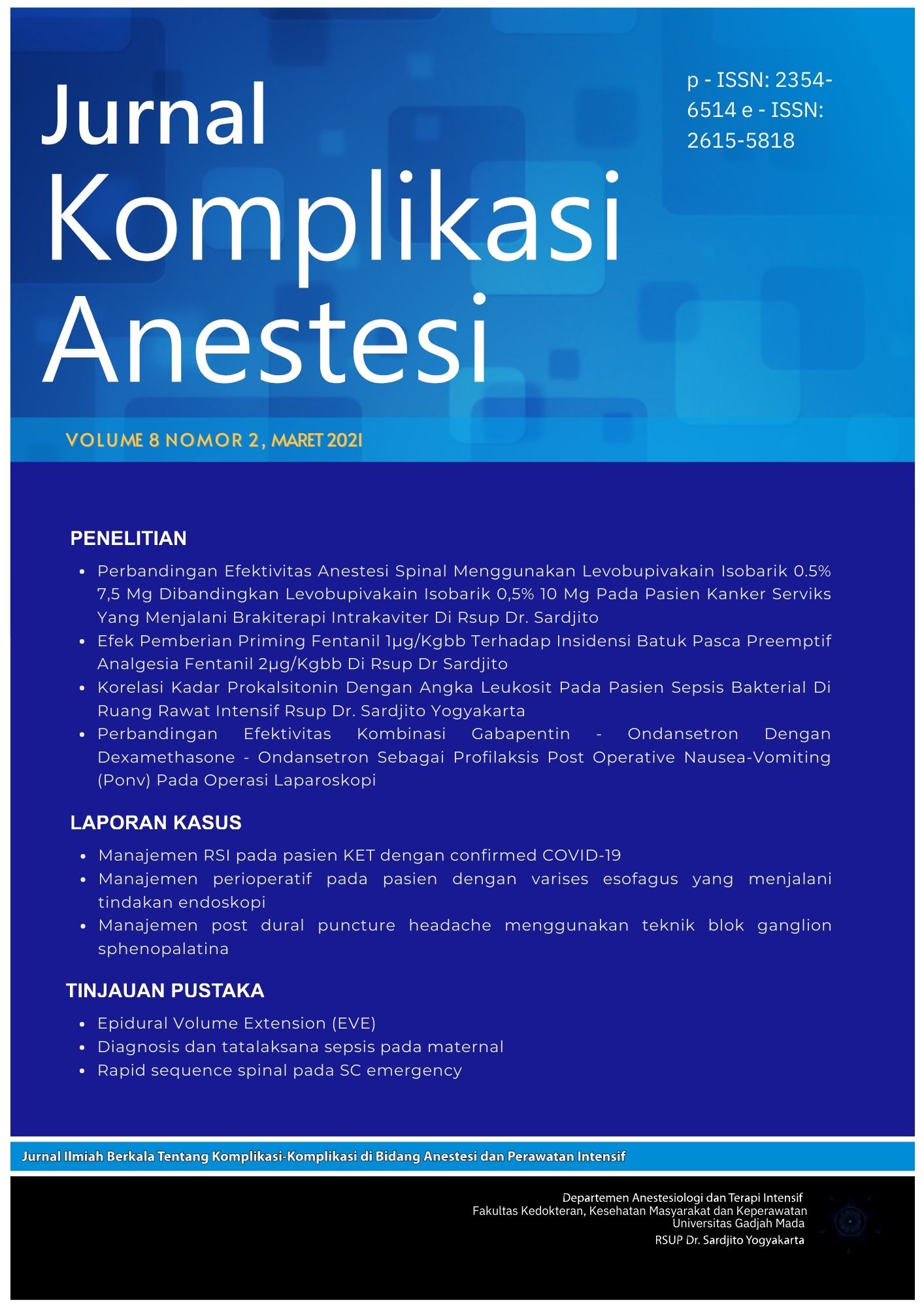Diagnosis dan Tatalaksana Sepsis Maternal
Abstract
Maternal sepsis is a common and potentially preventable cause of direct maternal death globally. A barrier to further progress has been the lack of consensus on the definition of maternal sepsis. Recognition and treatment of maternal sepsis are often delayed due to the physiological adaptations of pregnancy and vague or absent signs and symptoms during its initial presentation. Over the past decade, our understanding of sepsis has evolved and maternal early warning systems have been developed to help providers promptly identify and stratify parturients who are at risk. In addition, new consensus definitions and care bundles have recently been published by the World Health Organization and the Surviving Sepsis Campaign to facilitate earlier recognition and timely management of sepsis. Standardizing the criteria for maternal sepsis optimizes clinical findings. It may facilitate the evaluation of the role of different clinical parameters and biomarkers in the diagnosis, earlier recognition, and management of maternal infection and sepsis. Further work is required to develop an international consensus on the criteria for diagnosing maternal sepsis and any associated organ dysfunction.
Copyright (c) 2021 Akhmad Yun Jufan, Calcarina Fitriani Retno Wisudarti, Dikho Atmanagara

This work is licensed under a Creative Commons Attribution-NonCommercial-ShareAlike 4.0 International License.
The Contributor and the company/institution agree that all copies of the Final Published
Version or any part thereof distributed or posted by them in print or electronic format as permitted herein will include the notice of copyright as stipulated in the Journal and a full citation to the Journal.

















